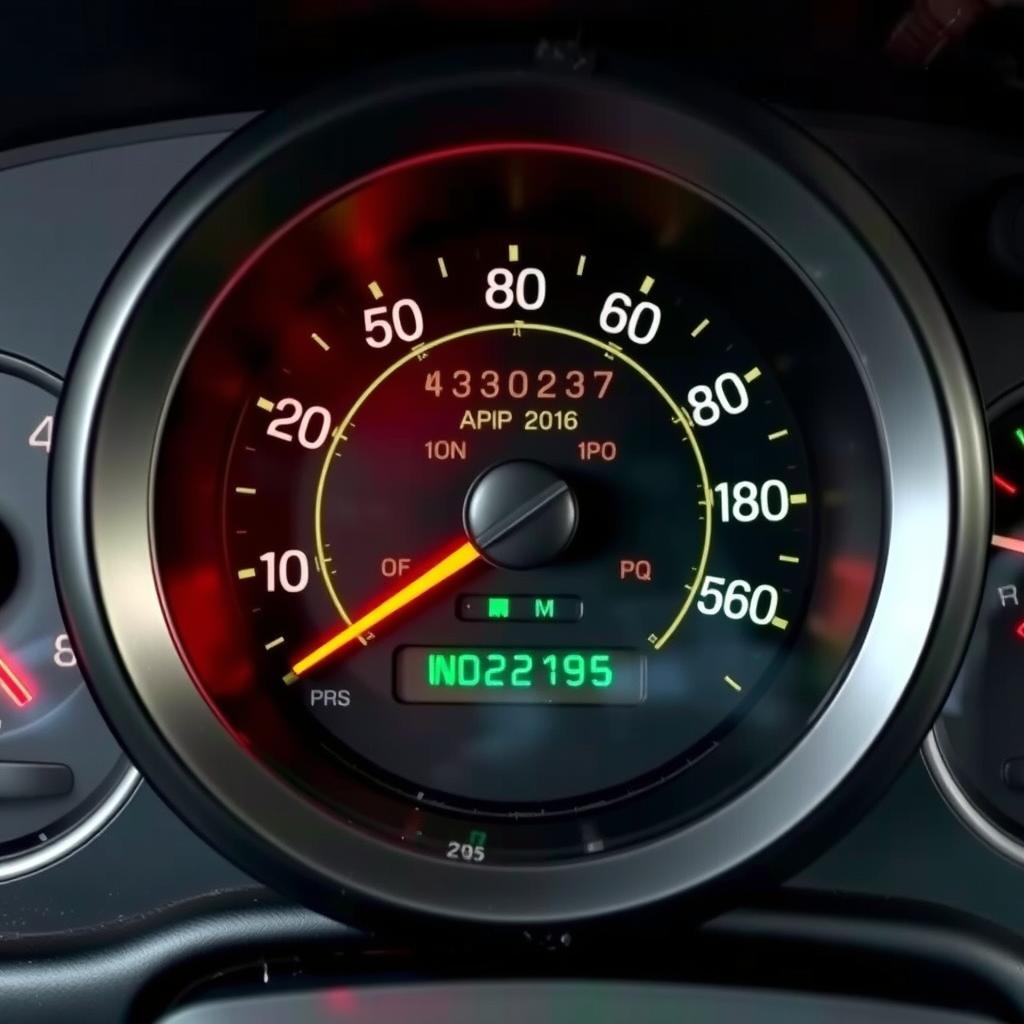How To Fix Speedometer In A 1996 Chevy Silverado?
“`html
Is your speedometer acting up in your 1996 Chevy Silverado?
A faulty speedometer can be a real pain, not just for knowing your speed, but also for things like accurate mileage tracking and even how your truck shifts gears, so fixing it is crucial.
I know how frustrating it is when your trusty Silverado’s speedometer starts giving you trouble.
Whether it’s bouncing erratically, stuck at zero, or just plain wrong, you’re probably wondering how to fix the speedometer in your 1996 Chevy Silverado without breaking the bank.
Troubleshooting Your 1996 Chevy Silverado Speedometer: A DIY Guide
Before you rush to the mechanic, let’s explore some common causes and DIY fixes for a malfunctioning speedometer in your 1996 Chevy Silverado.
Diagnosing the problem yourself can save you time and money.
We’ll cover everything from simple sensor checks to more involved component replacements.
Understanding the Basics: How Your Silverado’s Speedometer Works
Your 1996 Chevy Silverado’s speedometer relies on a system of sensors and gears to accurately display your vehicle’s speed.
The vehicle speed sensor (VSS), usually located on the transmission, plays a crucial role.
As your truck moves, the VSS sends electrical signals to the instrument cluster, which then translates those signals into the speed you see on the gauge.
A problem anywhere in this chain, from a faulty sensor to a wiring issue or even a bad gear, can cause your speedometer to go haywire.
Common Culprits Behind a Wonky Speedometer
Let’s break down the most frequent reasons why your 1996 Chevy Silverado’s speedometer might be acting up:
- Faulty Vehicle Speed Sensor (VSS): This is often the prime suspect.
- Wiring Issues: Damaged, corroded, or loose wiring between the VSS and the instrument cluster can disrupt the signal.
- Instrument Cluster Problems: The speedometer gauge itself might be failing.
- Gear Issues: The gears inside the transmission that drive the VSS could be worn or damaged.
- Blown Fuses: A blown fuse can interrupt the power supply to the speedometer system.
Step-by-Step: How to Diagnose and Fix the Speedometer in Your 1996 Chevy Silverado
Alright, let’s get our hands dirty and see if we can figure out what’s going on with your speedometer.
I’ll walk you through the steps, keeping it simple and straightforward.
1. Start with the Basics: Checking Fuses
Before diving into anything complicated, check the fuses related to your instrument cluster and VSS.
Refer to your Silverado’s owner’s manual for the location of these fuses.
A blown fuse is an easy fix, and it’s always worth checking first.
Replace any blown fuses with the correct amperage rating.
2. Inspect the Vehicle Speed Sensor (VSS)
Locate the VSS on your transmission.
It’s typically held in place by a bolt or two.
Visually inspect the sensor for any signs of damage, such as cracks or broken connectors.
Check the wiring harness connected to the VSS for corrosion or loose connections.
Clean any corrosion with a wire brush and ensure the connections are secure.
3. Testing the Vehicle Speed Sensor (VSS)
You can use a multimeter to test the VSS for continuity.
Disconnect the VSS and set your multimeter to the continuity setting.
Touch the multimeter probes to the sensor’s terminals.
A reading of continuity indicates that the sensor is likely functional, but it doesn’t guarantee it’s sending the correct signal.
For a more accurate test, you’ll need to check the sensor’s output signal while driving.
This requires a scan tool or diagnostic equipment that can read VSS data.
4. Inspecting the Wiring Harness
Carefully examine the wiring harness that runs from the VSS to the instrument cluster.
Look for any signs of damage, such as frayed wires, cuts, or melted insulation.
Use a multimeter to check for continuity in the wires.
If you find any breaks in the wiring, repair them with electrical tape or wire connectors.
Consider using dielectric grease on the connectors to prevent corrosion.
5. Checking the Instrument Cluster
If you’ve ruled out the VSS and wiring issues, the problem might lie within the instrument cluster itself.
Sometimes, the speedometer gauge motor can fail, causing inaccurate readings or a completely dead speedometer.
Removing and inspecting the instrument cluster is a more advanced task.
If you’re not comfortable with this, it’s best to take your Silverado to a qualified mechanic.
Fixing your speedometer in your 1996 Chevy Silverado is achievable with the right approach.
“` 
Fixing your speedometer in your 1996 Chevy Silverado can be a straightforward process if you follow these steps.
Advanced Troubleshooting: Getting Deeper into Your 1996 Chevy Silverado Speedometer Issues
So, you’ve checked the basics, but your 1996 Chevy Silverado speedometer is still acting up?
Time to dig a little deeper.
We’re going to look at some advanced diagnostic techniques that might help pinpoint the problem and get that speedometer needle steady.
Understanding Scan Tools and Diagnostic Codes for Speedometer Problems
One of the most valuable tools you can use is a scan tool.
This device plugs into your Silverado’s diagnostic port and can read error codes stored in the vehicle’s computer.
These codes can give you valuable clues about what’s going wrong with the speedometer system.
Common codes related to speedometer issues include:
- P0500: Vehicle Speed Sensor (VSS) Malfunction
- P0501: Vehicle Speed Sensor Range/Performance
- P0502: Vehicle Speed Sensor Circuit Low Input
- P0503: Vehicle Speed Sensor Circuit Intermittent/Erratic/High
Once you have the code, you can research its meaning and potential causes.
This will help you narrow down the possible issues and focus your troubleshooting efforts.
Remember, these codes only point you in the right direction, further diagnosis is crucial to verify sensor functionality and rule out circuit faults.
Using a Multimeter to Test the VSS Signal
We touched on using a multimeter for continuity, but you can also use it to check the VSS signal while the vehicle is running.
This requires a bit more finesse, but it can give you a definitive answer on whether the sensor is sending the correct information.
Here’s how to do it:
- Set your multimeter to AC voltage.
- Connect the multimeter probes to the signal and ground wires of the VSS connector (refer to your Silverado’s wiring diagram for the correct wires).
- With the rear wheels safely off the ground, have someone slowly spin the wheels.
- Observe the multimeter reading. You should see a fluctuating AC voltage that increases as the wheel speed increases.
If you don’t see any voltage or the voltage is erratic, it indicates a faulty VSS.
This voltage reading confirms whether you are receiving a signal from the VSS when your Silverado’s wheels are in motion, offering insight into sensor performance.
Checking the Transmission Wiring Harness for Damage
The wiring harness that connects the VSS to the instrument cluster is exposed to harsh conditions, including heat, vibration, and moisture.
Over time, this can lead to damage that disrupts the signal.
Carefully inspect the entire length of the harness for any signs of wear and tear, paying close attention to areas where the harness is routed near sharp edges or hot components.
Look for:
- Frayed wires
- Cracked or brittle insulation
- Corroded connectors
- Loose connections
If you find any damage, repair the wiring with electrical tape, wire connectors, or a new section of harness.
Protect the repaired wiring with heat shrink tubing to prevent future problems.
A thorough wiring check will reveal any interruptions in your Silverado’s speedometer circuit, potentially solving the issue without needing to replace components.
Inspecting the Instrument Cluster Connections
The instrument cluster is a complex electronic component with multiple connections.
A loose or corroded connection can cause a variety of problems, including a faulty speedometer.
To inspect the connections, you’ll need to remove the instrument cluster from the dashboard.
Refer to your Silverado’s service manual for specific instructions on how to do this safely.
Once the cluster is removed, carefully inspect the connectors for any signs of corrosion or damage.
Clean the connectors with electrical contact cleaner and ensure they are securely seated.
Reinstall the instrument cluster and test the speedometer.
Ensure all connections are secure to maintain a consistent signal, leading to an accurate speedometer reading.
When to Consider Professional Help: Knowing Your Limits
While many speedometer problems can be fixed with DIY methods, some issues require specialized knowledge and equipment.
If you’re not comfortable working on your vehicle’s electrical system or you’ve exhausted all the DIY options, it’s best to take your Silverado to a qualified mechanic.
They have the expertise and tools to diagnose complex problems and perform necessary repairs.
Don’t hesitate to seek professional help if you’re unsure about anything.
It’s better to be safe than sorry, especially when dealing with critical systems like the speedometer.
Professionals have the tools to accurately diagnose, repair or replace your Silverado’s faulty speedometer, ensuring driving safety and accuracy.
FAQ: Speedometer Troubleshooting for Your 1996 Chevy Silverado
Still got questions about your 1996 Chevy Silverado speedometer?
Let’s tackle some frequently asked questions:
- Q: My speedometer bounces erratically. What could be causing this?
- A: Erratic speedometer behavior is often caused by a faulty VSS, wiring issues, or a problem within the instrument cluster. Start by checking the VSS and its connections.
- Q: Can a bad speed sensor affect my transmission shifting?
- A: Yes, the VSS signal is used by the transmission control module (TCM) to determine shift points. A faulty VSS can cause erratic or incorrect shifting.
- Q: How much does it cost to replace a vehicle speed sensor (VSS)?
- A: The cost of a VSS replacement can vary depending on the brand of the sensor and labor costs. Generally, you can expect to pay between $50 and $200 for the sensor and another $50 to $150 for labor if you choose to have a mechanic do the job.
- Q: Is it possible to recalibrate my speedometer after changing tire sizes?
- A: Yes, it is possible to recalibrate your speedometer after changing tire sizes. This can be done using a scan tool or programmer that allows you to adjust the speedometer settings.
- Q: What tools do I need to diagnose and fix a speedometer problem?
- A: You’ll need a basic set of tools, including a multimeter, socket set, screwdrivers, wire brush, electrical tape, and possibly a scan tool.
With some careful troubleshooting and the right tools, you can get your 1996 Chevy Silverado speedometer working accurately again.
Knowing how to fix the speedometer in your 1996 Chevy Silverado is vital for maintaining accurate speed and mileage tracking.
“`json
“`

